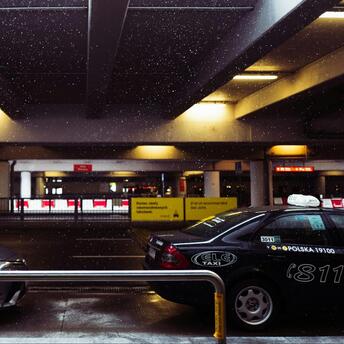How to Travel Comfortably Despite Chronic Pain

Traveling with chronic pain requires extra preparation and foresight. Here are some additional strategies to ensure a more comfortable and enjoyable journey for people with chronic pain.
Choose the Right Travel Time
Travel During Off-Peak Hours: Select flights or travel times that are less crowded. Early morning or late evening flights often have fewer passengers, making the travel experience less stressful and more comfortable.
Seasonal Considerations: Avoid traveling during extreme weather conditions. Cold weather can exacerbate pain for some, while extreme heat can be draining. Choose a season or time of year that is more favorable for your condition.
Optimize Your Environment
Hotel Arrangements: Choose accommodations that offer amenities catering to your needs. Look for hotels with comfortable beds, in-room temperature control, and on-site dining options to minimize the need for long walks or additional travel.
Room Customizations: Upon booking, request specific room modifications that can aid in comfort. For instance, ask for extra pillows, a quiet room away from elevators, or even a room with a bathtub if it helps in managing your pain.
Dietary and Lifestyle Adjustments
Pre-Travel Diet: A few days before travel, focus on a diet that minimizes inflammation. Foods rich in omega-3 fatty acids, antioxidants, and fiber can help reduce pain and discomfort.
Hydration: Staying well-hydrated before and during your trip can help manage pain levels. Bring a reusable water bottle to ensure you have access to water throughout your journey.
Mobility Aids and Techniques
Stretching Routines: Develop a series of stretches that you can perform easily in confined spaces, like an airplane or train seat. Regular stretching helps in maintaining flexibility and reducing stiffness during travel.
Mobility Aids: Consider using mobility aids such as a cane or a portable stool for resting during long walks. These aids can make a significant difference in managing pain during activities like sightseeing or standing in lines.
Sleep Management
Sleep Schedule: Try to adjust your sleep schedule gradually to match your destination's time zone a few days before departure. Adequate rest can help manage pain better and make the adjustment to a new time zone easier.
Sleep Aids: If you have trouble sleeping due to pain, consult your doctor about safe sleep aids or supplements that can help you rest better during your trip. Good sleep is crucial for managing chronic pain.
Technology and Apps
Health Apps: Use health and wellness apps to track your pain levels, medication schedules, and physical activities. Apps like MyPainDiary or Medisafe can help you stay on top of your health needs while traveling.
Entertainment: Download movies, audiobooks, or meditation guides to your devices. Engaging in enjoyable activities can distract from pain and make travel time pass more quickly.
Emergency Plans
Local Healthcare: Research healthcare facilities at your destination. Know the location of nearby hospitals or clinics in case of an emergency.
Emergency Contacts: Keep a list of emergency contacts, including your healthcare provider and local contacts at your destination. Make sure these contacts are easily accessible.
By implementing these tips, individuals with chronic pain can enhance their travel experience, ensuring they are prepared for various challenges while minimizing discomfort and stress.



















